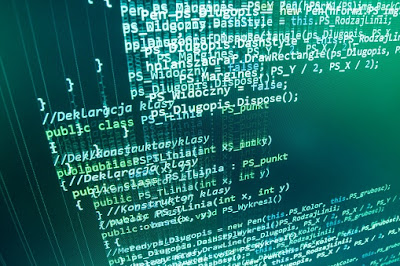If you are a Python programmer or interested in learning Python, you might have come across the term 'pip' and wondered what it means. In this article, we will discuss what pip is, why it is important, and how you can use it in your Python programming.
 |
| "What is pip and how to use it in python programming" |
What is pip?
Pip is a package manager for Python, which means it is a tool that helps you install, manage, and uninstall Python packages or libraries. A package or library is a collection of modules or functions that you can use to add specific functionalities to your Python program. Python packages can be downloaded and installed from the Python Package Index (PyPI) or other external sources.
Why is pip important?
Pip simplifies the process of managing Python packages, which is essential for Python developers because it saves time and ensures consistency across different environments. Using pip, you can easily install, upgrade, or uninstall Python packages, check their dependencies, and resolve any conflicts between them. Pip also allows you to install packages from PyPI or other sources, making it easy to use third-party libraries in your Python project.
 |
| "What is pip and how to use it in python programming" |
How to use pip in Python programming?
Pip is included in the latest versions of Python, so if you have installed Python on your computer, you should already have pip installed. To check if pip is installed, open your command prompt or terminal and type 'pip' followed by the Enter key. If pip is installed, you should see a list of available commands.
To install a Python package using pip, type 'pip install package_name' in your command prompt or terminal, where 'package_name' is the name of the package you want to install. For example, if you want to install the NumPy package, you can type 'pip install Numpy'. Pip will download the package from PyPI and install it in your Python environment.
To upgrade an existing package, type 'pip install --upgrade package_name'. To uninstall a package, type 'pip uninstall package_name'.
You can also use pip to install packages from other sources, such as Git repositories, local directories, or compressed archives. For more information on how to use pip, check out the official pip documentation.
Conclusion
Pip is a powerful tool for managing Python packages, and it is essential for any Python developer or programmer. By using pip, you can easily install, upgrade, or uninstall Python packages, check their dependencies, and resolve any conflicts between them. Pip simplifies the process of managing Python packages, making it easier for developers to use third-party libraries in their Python projects.
Pip was first introduced in 2011, and it quickly became the standard package manager for Python. It is an open-source project, and its development is coordinated by the Python Packaging Authority (PyPA).
When you install pip, it is added to your system's PATH, which means you can access it from any directory in your command prompt or terminal. Pip is written in Python, and it uses Python's standard module distutils for package installation.
Pip provides a wide range of commands that you can use to manage Python packages. Some of the most commonly used commands include:
- install: installs a package or multiple packages
- uninstall: uninstalls a package or multiple packages
- list: displays a list of installed packages
- show: displays information about a specific package
- search: searches for packages on PyPI
freeze: generates a list of installed packages and their versions, which can be used to replicate the environment on another system
Pip also supports the use of requirements files, which are text files that list the required packages and their versions. You can use a requirements file to install multiple packages at once or to replicate an environment on another system.
In addition to PyPI, pip can also install packages from other sources, such as Git repositories, local directories, or compressed archives. This makes it easy to use packages that are not available on PyPI or to work with packages that are still in development.
Finally, it's worth noting that pip is not the only package manager for Python. Other popular package managers include conda, Anaconda, and Miniconda. However, pip remains the most widely used package manager, and it is the default option for most Python developers.
pip, Python, package installer, programming, modules, dependencies, package management.

0 Comments